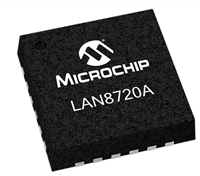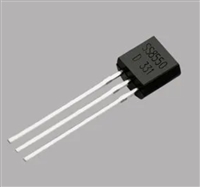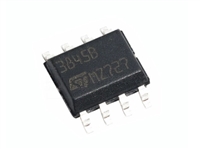Application Notes
PT7670 Series
Operating Features and System Considerations
for the PT7670 Series of ISRs
Power up & Soft-Start Timing
sense pins disconnected will not damage the regulator.
An internal 15 Ω resistor, connected between each sense
pin and its corresponding output node, keeps the output
voltage in regulation. If the remote sense feature is not
used it is important to at least connect the Sense(–) pin
to GND locally, as this provides a return path for the
regulator’s internal bias currents.
Following either the application of a valid input source
voltage, or the removal of a ground signal to the STBY
control pin (with input power applied), the regulator will
initiate a soft-start power up. The soft start slows the
rate at which the output voltage rises, and also introduces a
short time delay of approx. 10ms. Figure 1-1 shows the
power-up characteristic of a PT7671 with a 15-A load,
and with the output voltage programmed to 3.3 V.
With the sense leads connected, the difference between
the voltage measured between the Vout and GND pins,
and that measured between the Sense(+) and Sense(–)
pins, is the amount of IR drop being compensated by the
regulator. This should be limited to 0.6 V. (0.3 V maximum
between pins 25 & 26, and also between pins 12 & 13).
Figure 1-1
Note: The remote sense feature is not designed to compensate
for the forward drop of non-linear or frequency dependent
components that may be placed in series with the converter
output. Examples include OR-ing diodes, filter inductors,
ferrite beads, and fuses. When these components are enclosed
by the remote sense connections they are effectively placed
inside the regulation control loop, which can adversely affect
the stability of the regulator.
Vo (2V/Div)
Iin (10A/Div)
Vin (2V/Div)
Over-Temperature Protection
The PT7670 series of ISRs incorporates an on-board
temperature sensor, which protects the module’s internal
circuitry against excessively high temperatures. A rise in
the temperature of the internal components may be the
result of a drop in airflow, or a high ambient temperature.
If the module’s internal temperature exceeds its OTP
threshold (see data sheet specifications), the regulator
output is disabled and the output voltage is reduced to
zero. The recovery is automatic, and begins with a soft-
start power up. It occurs when the the sensed temperature
decreases by about 10 °C below the trip point.
HORIZ SCALE: 10ms/Div
Over-Current Protection
To protect against load faults, the PT7670 series of regula-
tors incorporates output over-current protection. Applying
a load that exceeds the regulator’s over-current threshold
(see data sheet specifications) will cause the regulated
output to shut down. Following shutdown the ISR will
periodically attempt to recover by initiating a soft-start
power-up. This is often described as a “hiccup” mode
of operation, whereby the module continues in the cycle
of successive shutdown and power up until the load fault
is removed. During this period, the average current flowing
into the fault is significantly reduced. Once the fault is
removed, the converter automatically recovers and returns
to normal operation.
Note: The over-temperature protection is a last resort mecha-
nism to prevent thermal stress to the regulator. Operation at
or close to the thermal shutdown temperature is not recom-
mended and will reduce the long-term reliability of the module.
Always operate the regulator within the specified Safe Operating
Area (SOA) limits for the worst-case conditions of ambient
temperature and airflow.
Differential Remote Sense
Connecting the Sense(+) and Sense(-) pins to the load
circuit allows the regulator to compensate for limited
amounts of ‘IR’ voltage drop. This voltage drop is caused
by current flowing through the trace resistance between
the power converter and the ‘point of regulation’ some
distance away. Although not recommended, leaving the
For technical support and more information, see inside back cover or visit www.ti.com






 AT24C256芯片手册参数分析、引脚说明、读写程序示例
AT24C256芯片手册参数分析、引脚说明、读写程序示例

 LAN8720A的替代型号推荐、资料手册数据分析、特点介绍
LAN8720A的替代型号推荐、资料手册数据分析、特点介绍

 SS8550数据手册:应用场景、主要参数分析、特性分析
SS8550数据手册:应用场景、主要参数分析、特性分析

 UC3845全面解析:资料手册参数、引脚详解、维修技巧与替代型号推荐
UC3845全面解析:资料手册参数、引脚详解、维修技巧与替代型号推荐
